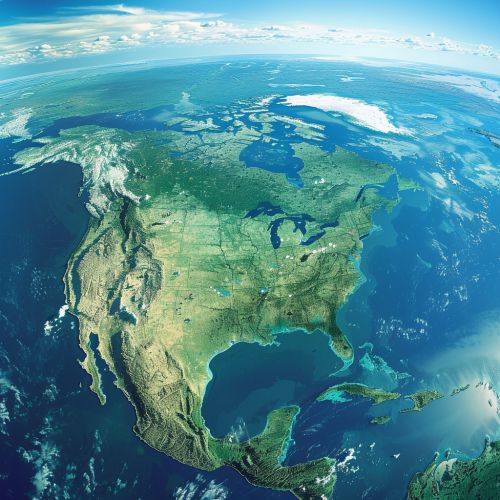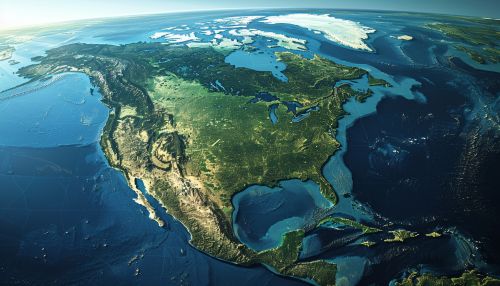North America
Geography
North America, the third largest continent on Earth, is bounded by the Atlantic Ocean to the east and the Pacific Ocean to the west. It extends from the Arctic Ocean in the north to the Caribbean Sea and the Isthmus of Panama in the south.


The continent's topography is dominated by the Great Plains, a vast expanse of flat land, much of it covered in prairie and steppe, lying west of the Mississippi River and east of the Rocky Mountains. The Great Plains are interrupted by the Great Lakes, the largest group of freshwater lakes on Earth by total area.
To the west of the Great Plains, the Rocky Mountains traverse the continent, extending from Alaska to New Mexico. These mountains are known for their dramatic landscapes, with peaks that reach over 14,000 feet. The highest point in North America is Mount Denali, located in Alaska, standing at 20,310 feet.
Climate
North America's climate varies widely due to its size. The continent has every type of climate: tropical rainforest in southern Florida and the Windward Islands, to tundra in Alaska and northern Canada, to desert in the Great Basin of the United States, to Mediterranean in California and Mexico's Baja California Peninsula.
Flora and Fauna
North America is home to a diverse range of flora and fauna. The continent's various ecosystems range from the rainforests of Central America and the Caribbean to the vast, treeless and frozen tundra of the Arctic.
History
The history of North America encompasses the past developments of people populating the continent of North America. The continent was first inhabited by indigenous peoples, from at least 14,500 BC, with the population's migrations and the Pre-Columbian era of the many indigenous cultures that lived in the Americas before they were invaded and/or settled by Europeans in the 15th century.
Demographics
As of 2021, North America's population is over 590 million people, spread across 23 independent countries. The most populous country is the United States, followed by Mexico and Canada.
Economy
North America is rich in natural resources. It is the world's largest producer of copper, gold, coal, molybdenum, lead, and zinc. The U.S. is the leading industrial power in the world and is a major source of agricultural products.
Culture
The culture of North America is diverse because of its large population and variety of ethnic groups. The strongest influences on North American culture come from European cultures, especially English, French, Irish, and Spanish culture.
